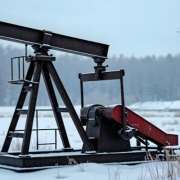The China LNG story – more toxic than the US story was
China holds the promise of salvation for many LNG projects. The whole scenario curiously smacks of the US gamble less than a decade ago. Why is China more dangerous?
Do you remember the US LNG map from around 2005? There were so many LNG import terminal proposals up and down both coasts of North America, that the coastline could hardly be seen on most maps. The US, it seemed, would be the El Dorado for LNG producers as domestic Natural Gas consumption was on the decline, and pipeline import options were not great. New LNG export terminal proposals were built on the assumption, that the US market would provide them with a lifetime of blockbuster returns. Even more were in the planning stages.
Fast forward to 2010. Less than a decade and what was once dubbed the most important end-market for LNG was no more. An unlikely low-yield resource – shale gas – had killed LNG’s biggest Bonanza sending almost all receiving terminal projects and even the dreams of some exporters down the dumpers. Luckily for LNG exporters, burgeoning demand from Asia picked up the tab and kept the market from collapsing.
Forward again to 2012 and the US seems to be on the verge of becoming an LNG exporter in its own right. This, combined with new volumes from Australia, shows the prospect of Asia being drowned in LNG. But there is a shiny white knight on the horizon. China with its ever-growing industries, with its endlessly expanding consumer markets, with its insatiable thirst for energy, promises to become the new LNG El Dorado.
Reality check: high energy prices killed the upcoming US LNG import market, as only they made going for shale economically attractive. A Contrario can be argued that without high energy prices, shale would not even have been tried out and hence would not have happened. Apply this logic to China and it’s not hard to see what is going to happen.
China holds larger shale gas reserves than the US – at least that’s what the geological surveys say. They also have much less of a problem with landowners rights and NIMBY/NIMTO/NOPE activism. The question is how deep those reserves are under the surface and how easily the flow rate can be stimulated. But those are engineering questions and if I have learned one thing, it is that engineering obstacles can be overcome.
Remain two large issues: politics and profitability. In other words – will Chinese decision-makers see shale as an opportunity, or as a threat and is it more interesting importing natural gas or producing domestic shale? The economic question is hard to answer because as we have learned from the US shale plays, no shale gas field or indeed no shale gas well is like the other. Also, the price of imported LNG is impossible to predict (contrary to what many seem to believe) which makes comparing economics foolish.
Remains, the political issue and that’s a weighty one. China is becoming more and more nationalistic in tone. That’s a normal development for a country grappling with colossal internal issues as they have to. Autarky of any kind always resonates nicely with governments under pressure. And energy autarky resonates especially well. China is not an exception – we have those discussions in the US for another example.
But bigger than energy supply issues loom the issue of the millions of jobless workers roaming the Chinese hinterland. They are a security risk to the Chinese government and Asians have always put a premium on social balance and stability.
Shale gas is very labor intensive and as the wells would have to be re-stimulated from time to time that’s a perpetual jobs-creating machine. Faced with a technology that allows them to wean themselves from expensive energy imports and also resolve at least part of the burning labor issue, it’s not very hard to guess what that will do to Chinese minds.
But what happens to all those receiving terminals then? Let’s face it – a receiving terminal is a very expensive piece of infrastructure but in the overall Chinese picture it’s – well – not very much. China can easily afford to write off one or more receiving terminals if it believes that this is in its best economic interest.
Back to the original issue – why is all that more dangerous than the US LNG bubble popping? For two reasons: Firstly, the China bubble already swallowed some of the US bubble as the LNG industry quickly moved its hopes and expectations onto Asia. So there is already significant contagion from the US disaster. The US did not have to deal with that as it went into the adventure with no package from anywhere else.
But the second, much more serious reason is that the US bubble was built largely on cheap liquefaction from countries like Qatar. At the CAPEX exposure, the Qataris took when they rushed into the US gamble, they could even afford the market to falter. Their meat on the bones is so significant that they can cut a decent living even on a pretty depressed LNG market. Besides, they had never bet their entire portfolio on one market alone. Their portfolio was always split among the major markets and with their geographical position, they could afford to.
However Australian projects (or those in the geographical vicinity) are based on Asian bumper markets only. If those fail, there is no safety valve. Besides, their CAPEX exposure per ton is infinitely heavier than what the Qataris carry. China – and to a larger extent Asia – enables some projects, that have gone over the cliff, to show theoretical profitability. When that bubble pops, it’s going to be biblical.


















Leave a Reply
Want to join the discussion?Feel free to contribute!